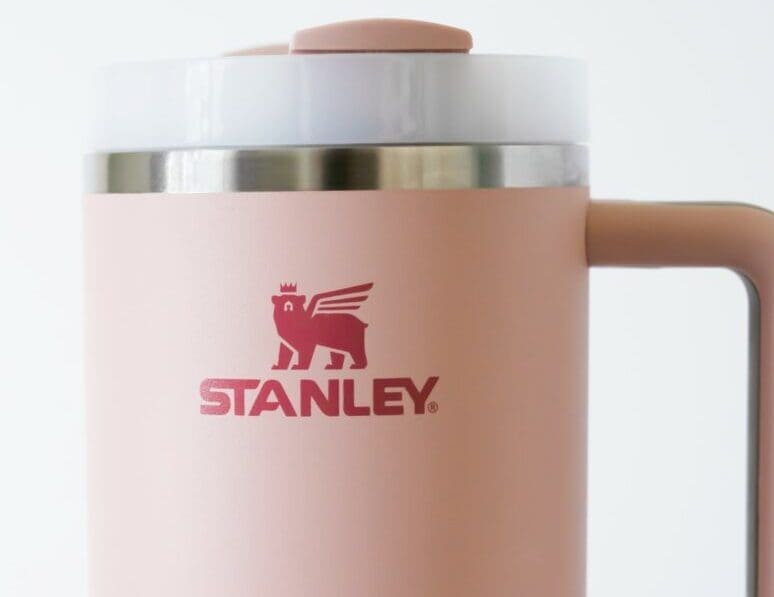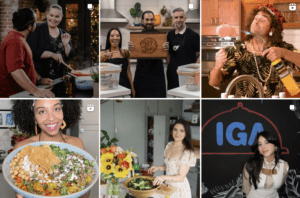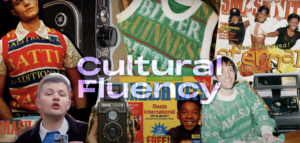“Wisteria, Orchid, Lilac, Cloud, Tiger-Lily…” @doesnttiktok kicks off. But this isn’t your typical baby name brainstorm; instead, this TikToker is actually naming all 120+ of her beloved Stanley Quenchers. Holli Silva is just one of the hundreds of women all over the globe proudly documenting their ever-expanding Stanley collections, and the craze doesn’t seem to be dying down anytime soon. Just recently, a viral clip showing customers fighting to claim their very own exclusive Valentine’s Day Stanley Cup took over our TikTok FYP, sparking a whole conversation about consumerism and the sway of influencer marketing in the social media realm.
But it didn’t start off so cute. Back in 2016, the Stanley 40oz Quencher model was introduced by the brand it wasn’t an instant hit. Traditionally, Stanley products were targeted at workmen, with the marketing being directed at those who enjoy outdoor activities like camping. In 2012, Stanley mentioned that its products resonated with “a 30-year career veteran policeman” and “a retired Army soldier.”
That was until ✨social media ✨stepped in. Fast forward to 2023, and the #StanleyTumbler has over one billion views on TikTok and the tumbler found itself as now one of Gen Z’s most in-demand Christmas gifts. This newfound popularity among Gen Z and Millennial women certainly stands in stark contrast to the brand’s original target audience.
So, what happened to cause this shift?
There are four things we accredit to this development, so let’s dive into them
@thefifthagency Read our new trendsetters piece ‘How Social Turned the Stanley Cup into an Influncer Icon’ to find out how Stanley got to this point✨✨ #stanleycup #thatgirl #agencytiktok #socialmediaagency #london #workhumour #officetok ♬ That Gworl – TheBossWives 💍
INFLUENCER MARKETING
In 2017, the Stanley Cup had limited recognition among female Gen Z and Millennials. This was also around the time when influencer marketing really started to build momentum, which has since evolved into the thriving multi-billion-pound industry we are (very) familiar with today.
The turning point came when the Stanley 40oz Quencher garnered organic exposure on The Buy Guide, a shopping blog by Linley Hutchinson, Ashley LeSueur, and Taylor Cannon. These influential women, avid fans of the product and genuine believers in its quality, gave it a glowing review and introduced it to their predominantly female audience. Despite being available in limited quantities on Amazon, every mention led to a swift sell-out, revealing the product’s unexpected popularity among millennial women—an untapped consumer group for the brand.
However, this success faced a setback when Stanley decided to discontinue selling the product altogether. Recognising its potential, the three women took matters into their own hands and started gifting mumfluencers on Instagram, and word-of-mouth quickly spread. Women loved the product and couldn’t get enough of it! The ladies behind The Buy Guide said it took a while to convince the brand just how much spending power and influence Millennial women have on social media, but Stanley eventually took a leap of faith, and the rest is history.
CONSPICUOUS CONSUMPTION AND SOCIAL MEDIA
Despite Gen Z and Millennials being fairly educated on the future of our planet and the effects of unsustainable consumption, it seems the impact of social trends and the desire to fit in online are still having a huge impact on the way we shop. Stanley claims their products “will last a lifetime when properly cared for” with a #BuiltForLife ethos, yet consumers are purchasing multiple versions of the same cup in different colours and styles. In line with this ethos, consumers should only really need to buy up to two Stanley cups in their lifetime. So why do people feel so compelled to buy the newest version of a cup they already own?
This is due to the way social media markets this cup towards Millennial and Gen Z audiences. The Stanley Cup is now positioned not just as a practical addition to our lives but as a symbol of an aspirational lifestyle. Priced at around £45, it stands higher in cost compared to similar products in the market. Considering the dynamics of social status, consumption trends, and the overarching influence of social media in selling a curated lifestyle, the Stanley Cup has seamlessly carved its niche. The frenzy around it taps into the fear of missing out, creating a sense that not having this product, not stocking up on the newest iteration and exclusive colour-way, means missing out on the lifestyle that it represents.
@kaelimaee HAPPY SATURDAY 🩷🫶🏼✨ spend the morning with me 🙂 #morning #vlog #grwm #morningvlog #morningroutine #aesthetic #asmr #asmrsounds #breakfast ♬ original sound – kaeli mae
Let’s look at @kaelimaee as a prime example of this. Kaeli’s whole presence on social media has been meticulously crafted around living an ‘aesthetic’ lifestyle. Just one glance at her specially curated TikTok feed, and you’re left feeling like you want to get your life together! She’s amassed 14.8M followers on the platform and, of course, the Stanley cup takes centre stage in many of her videos, implying that it’s not just a product, but a lifestyle essential, and that you too should buy one if you want to emulate the ‘perfect’ lifestyle depicted by Kaeli.
Stanley caters for everyone, with nearly all of their products being customisable with either text, monograms or graphics – not to forget the 26 colours the quencher comes in. This level of customisability has garnered attention from the likes of Molly-Mae, who recently posted her nails matching her Stanley cup. An organic post of this nature is something hundreds of brands would pay a large sum of money for – so this really shows just how popular Stanley has become today!
VIRAL MOMENTS
Stanley walked right into a dream PR scenario last November. @Danimarielettering, posted a now-viral TikTok video of the remnants of her car after a fire, where just her Stanley 40oz Quencher survived the flames. The water inside the cup was still ice cold. While Stanley’s whole ethos is built on being #BuiltForLife – which we wouldn’t say was a largely known tagline. This video led to over 95.2 MILLION people being enlightened about the product’s durability. TikTok’s largely younger audience now knew that Stanley was not only socially ‘cool’, with its varying models and colours to choose from, but actually a quality product that’s worth investing in.
“Your brand is your public identity, what you’re trusted for” – Lisa Gansky (American entrepreneur and author)
The Stanley team really took advantage of this situation, showing just how much their social media strategy has evolved over the years. The president at Stanley, Terrance Riley, publicly sent Dani a whole new collection of Stanley products alongside a brand new car! This naturally gave them some hugely positive PR. We guess this part of Stanley’s rise is part down to luck (while also seeing an organic opportunity and creating reactive content in response to it), and part down to the actual benefits of the product itself. Humanising a brand is so important, something which Sam Mehrbod, contributor to Forbes encapsulates:
“People want to do business with those they know, like, and trust, and building a personal connection with your audience can help to achieve this. Your personality and values humanise your brand, making it relatable and more appealing to potential customers.”
And it is clear here that this is something that the Stanley team have mastered.
@danimarielettering What a journey, thank you all sooo much for being here for it. I cant say it enough, this wouldnt have happened without every single one of you. Love you and @Stanley 1913 ♬ The Champion – Lux-Inspira
DROP CULTURE
YouTuber and historian @philedwardsinc believes people are missing a key component when analysing Stanley’s success, and that is Terrance Riley, the Stanley president himself.
When looking at Riley’s career history and successes, it is understandable why Edwards thinks the success was more down to a well-planned strategy than simply luck. Terrance was previously head of marketing at Crocs, where he built the brand from a simple outdoor shoe into an iconic fashion statement, where collaborations with brands like Levi’s and PALACE were the norm and people like Post Malone were the average fans. All of which was achieved through his ability to make the drop style culture of sneakers work for Crocs where collaborations with top industry names were frequent…and who’s to say he didn’t do the same with Stanley.
With the help of Terrance, Stanley began collaborating with bigger iconic names “albeit influencers of different styles” to create limited edition collections. Take the Lainey Wilson collaboration for example, a country singer from Tennessee with a dedicated fanbase, yet completely unrelated to the traditional target audience of Stanley, allowing them to explore new spaces and reach new people. Through these limited drop-style collaborations Stanley were able to create this perception of scarcity, causing fans and people to feel pressure to buy a tumbler before they miss the boat.

An even greater example of drop culture and FOMO marketing is the recent limited edition Stanley x Starbucks Valentines collection. The cups come in two bright Barbie pink and red shades. Not only have the videos of shoppers been storming our FYP’s as we’ve mentioned, but the cups are even being resold for double the price on sites like eBay. It’s crazy to think a cup can create such high demand – but this is exactly how exclusive drops can make you feel like you’re missing out if you don’t purchase and add to your collection.
So yes, whilst the rise of the Stanley Cup was part down to luck and part down to social media and influencer marketing, it’s also an effective example of how experimenting with drop culture can be a useful tool to implement for the success of a product.
TO WRAP UP…
What was once a humble ‘camping cup’, has now evolved into social media’s ‘IT GIRL’ product of 2023. Stanley’s success story is one that brands should really look to as an example of the transformative influence of social media and influencer marketing on public perception.
But like most social media trends, there is often an expiry date, and Stanley could be nearing theirs. However, in the meantime, we think the brand is going to continue to enjoy riding the wave. But ultimately there’ll be another shiny and exciting rival to push Stanley off the top, stay tuned to keep track of what social trend is next in vogue.
P.S
We even spotted a couple of new Stanleys floating around The Fifth’s office after Christmas… very well confirming that a few of us here have also been easily influenced by Stanley’s social media takeover!







